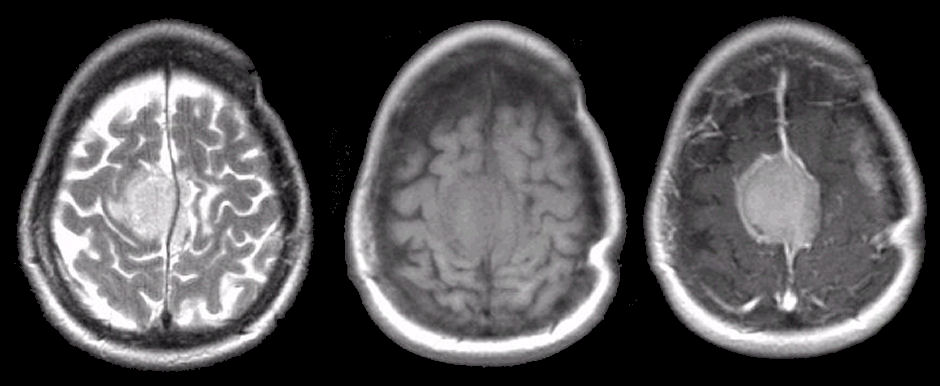
|
A 55 year-old woman presented with weakness of both legs and difficulty walking. A spinal cord lesion was initially suspected. |

![]()
![]()
![]()
| Meningioma (Parafalcine). (Left)
T2-weighted axial MRI; (Middle) T1-weighted axial MRI; (Right) T1-weighted with gadolinium
axial MRI. Note the large
midline mass that
compresses the adjacent medial frontal lobes. The mass enhances with contrast.
This is the appearance of a meningioma.
Meningiomas are common tumors that arise from the meninges and can occur within the spinal canal as well as intracranially. They are typically benign histologically, and can be surgically resected if they are in an accessible location. They are more common in women than men, and account for approximately 20% of all primary brain tumors. Similar to low grade gliomas, they grow very slowly. They may result in seizures, focal neurological signs, or both, depending on their location. Some of the more common locations for meningiomas include: ● Parasagittal (attached to the falx) |
Revised
11/30/06.
Copyrighted 2006. David C Preston